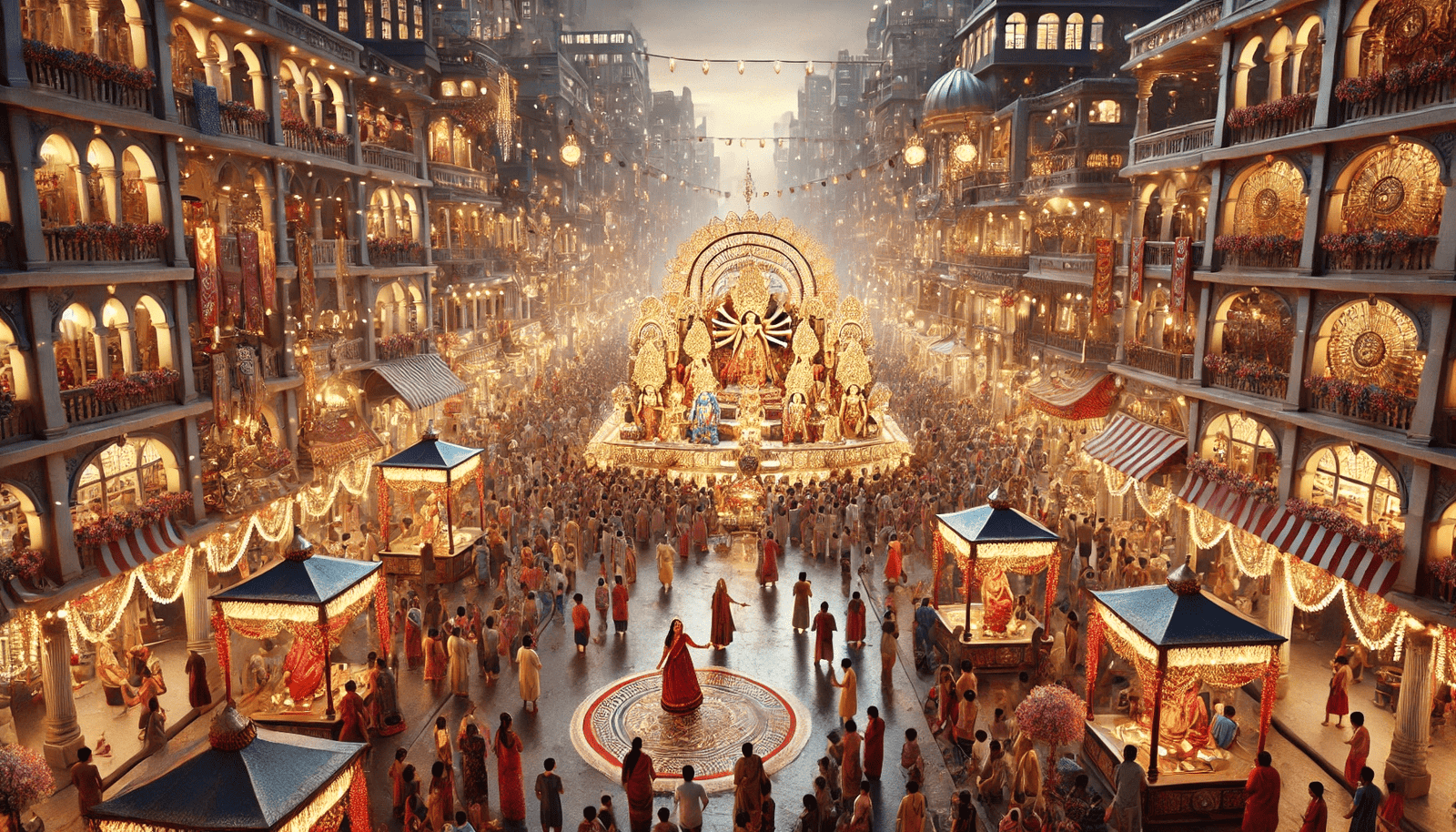The Navaratri festival transforms the cityspaces for a good nine days. The festival has a profound effect on the urban settings of a city. It creates a vibrant space for public engagement, heritage conservation and art exhibitions. This colourful and vibrant festival greatly influences the community spaces and architecture of a place especially in regions where the festival is widely celebrated. Navaratri celebrations can temporarily transform a whole city.

One of the most important elements of this festival is “pandals”. These temporary installations transform the neighbourhood spaces into sacred urban centres. In many parts of the country the pandals showcase the most creative arts, crafts and temporary architecture of the year. The pandals often combine local art, contemporary themes and intricate designs to reflect the festival’s spirit. Many pandals take months to create larger than life installations. For a few days these pandals turn the cities into huge art galleries.The themes highlight important burning issues thus making social, cultural and political commentaries. They are great examples of combining practical purposes with social, ritualistic and creative uses in architecture.

The festival transforms the existing spaces into huge areas of community celebration. Temples,community spaces and public neighbourhoods can witness modifications to accommodate the celebrations. Along with temporary installations, existing buildings are beautifully decorated with illumination, flowers and traditional fabrics. Spaces in large public grounds and community centres are reorganised. The spaces are laid out to allow movement according to the traditional garba and dandiya dance forms.

This spatial arrangement alters if a pandal is constructed at these places. The space needs to be reorganised to allow room for the altar, the accompanying stalls and stages if there are any. It needs to manipulate the existing space to accommodate and allow easy flow of huge crowds. These transformations are not limited to just open spaces. Even the roads and pathways are modified to celebrate the festivities especially during the processions. The procession route is often lined with temporary decorations and seating arrangements, transforming the streets into festive spaces. This requires careful planning to ensure accessibility and safety.

The festival also strengthens the community bonding and allows mass participation. The spaces become avenues of public engagement irrespective of the social divisions. Such festivals help in making deeper social connections and highlight the relation between spaces and communities. From the rich patrons to a pandal labourer, the festival fosters shared cultural bonds of creativity and spirituality. These festivals are also expressions of the shared cultural identity of the residents of the space. The whole celebration involves extensive community collaboration, negotiation of public space, and artistic expression, which reflects local aspirations and values. Hence it strengthens community ties across the social divides.

These celebrations are also forebearers of preservation of traditional arts, crafts and heritage. One can witness a rich diversity in navaratri celebrations across the country. Pandals all over the country represent regional diversity and the rich cultural heritage of India. Apart from being innovative and incorporating modern themes, these pandals also incorporate varied traditional themes, heritage monuments and diverse local arts. They also become avenues to propagate traditional dances, music and showcase elaborate rituals associated with the festival. Therefore acting as preservers and conservers of our rich heritage.

The Navaratri festival showcases the huge impact that cultural practices have on architecture and spaces. The celebrations highlight the interplay between community engagement, public spaces and cultural identities. They temporarily transform the spaces to accommodate the festivities, turning them into large open avenues of community engagements. These public celebrations shape a collective identity and public memory of the city. They also act as forebearers of traditions and preservers of heritage. Festivals have a profound impact on the lived memory of a space, shared identity of regions and cultural cohesion of architecture .
References
- Prana world
- Re-thinking the Future
- Dallas, Homi N, “Effect of Culture on Architectural Expression.”
- Ar. Devang Shah, Culture And Architecture – The Dynamic Interaction In Design
- Anjan Mitra, Madhumita Roy, City, Culture and Public Event – a temporal construct
- Sayantani Saha, Shivashish Bose, Seasonal Transformation of Urban Space: A Case Study during Durga Puja
